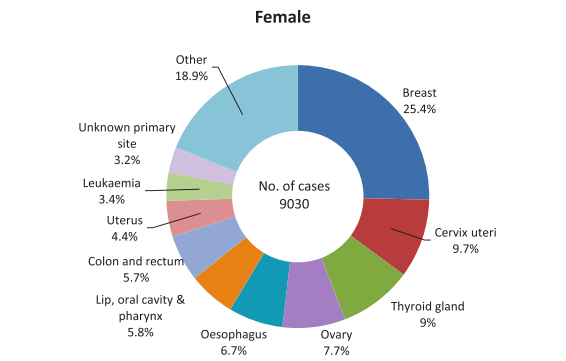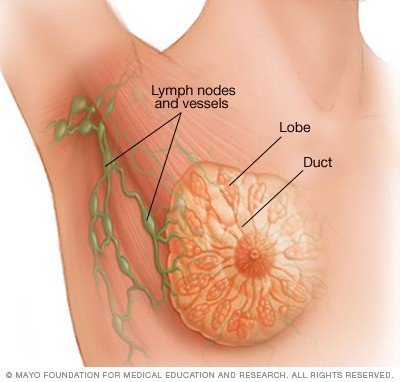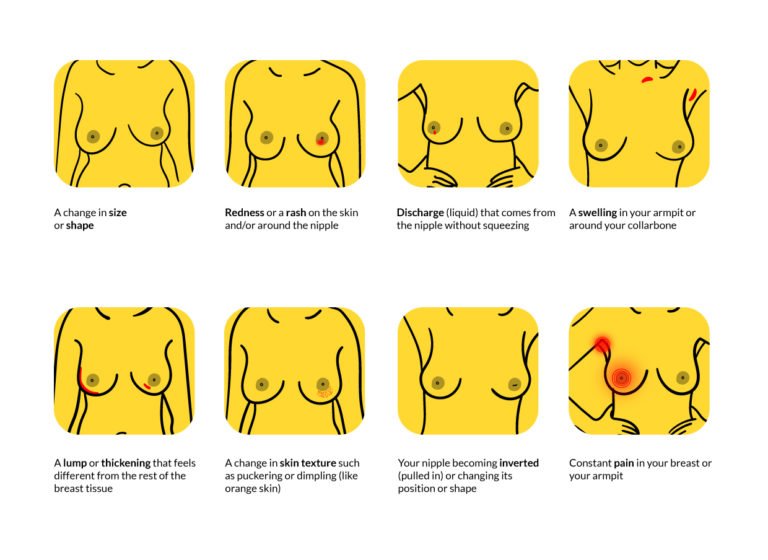
Menopause Brain Fog is real: A Simple Guide with Symptoms and Treatment
Menopause Brain Fog is real: A Simple Guide with Symptoms and Treatment Women in their 40s and 50s who are just entering the end of
It’s that time of year again: when your social media is flooded with pink ribbons, radio waves are abuzz with tips and fundraisers gain momentum. October is breast cancer awareness month.
As of 2021, Breast cancer became the most common cancer globally by accounting for 12% of all new annual cancer cases worldwide, says the World Health Organization. In Sri Lanka, around 3000 new cases are identified each year and breast cancer is the most common tumour. Turns out, in very rare instances, men too can get it.

Despite being so common, breast cancer is also highly treatable if detected early. We break down the steps you can take to assess and lower your risk levels.
What is breast cancer?
Breast cancer is cancer that forms in the breast of the cells.
What are the symptoms of breast cancer?
Generally, symptoms of breast cancer are linked to a palpable or visible change in the breast tissue. Some common symptoms includes:


This means that breast self-exams are extremely important. Regular exams help you get familiar with the normal shape and texture of your breasts so that any anomalies can be quickly identified.
How to perform a breast self-exam in five steps
Look for:
Look for:


3. Lie down on a flat surface. Use your right hand to feel your left breast and vice versa. Use the finger pads of your hand to apply a firm and smooth circular motion (size of a coin) to your breast. Keep the fingers close together.
Cover the whole breast from side to side, up to the collarbones and into the armpit.
Feel for:
4. Feel your breasts in the same manner whilst you are standing or sitting. This is ideally done in the shower as the water and soap allow for a smoother movement.
What to do if you discover a lump or any visible changes
Do not panic. Not all breast lumps or bumps mean breast cancer. In fact, most turn out to be benign (non-cancerous). Non-cancerous breast lumps can be caused by hormonal changes, injuries or a benign condition. However, it is vital that all bumps are discussed with a medical professional.
Don’t be shy, speak to a medical professional. Early detection does save lives. So if you have noticed a lump lasting for longer than one menstrual cycle, it’s important to speak to a family doctor or a GP. The doctor will most often refer you to an imaging test. Ultrasounds are often the only test used for women under 30 whilst ultrasound and mammograms are used for women over 30.
Do ask questions. Here are a few you can ask your GP to help you gain clarity.
If unsatisfied with answers or level of care, do get a second opinion.
How often should I perform a breast self-exam?
Do it every month around 7-10 days after your period starts. This is when your breasts are as tender or lumpy and make sure to examine them before you start menstruating as well. Therefore, you can understand the natural changes.
If you are no longer menstruating, do it at regular intervals every month.
In both instances, make sure to journal the changes with date
What are the risk factors?
Risk factors are aspects that make it more likely that someone could develop breast cancer, however, having one or a combination of these factors doesn’t mean you’ll get it. A healthy awareness of risk factors will allow you to take steps to mitigate the risk.
How can I reduce my risk of breast cancer?
Whilst there are no hard and fast rules on ensuring one doesn’t develop breast cancer, the following non-exhaustive list is to help you mitigate your risk:
When it comes to breast cancer, early detection does help save lives.
Make sure to carry out your self-examination, consult your doctor regularly and live a healthy life. Ignorance is usually bliss, just not here.
In 2022, Breast Cancer Awareness month focuses on the disparity of resources to fight this disease across the globe. If you are looking to take the first step, we are here
If you’d like to speak with a GP or a family doctor to discuss your questions or concerns, our oDoc partner doctors are available. Download oDoc here to get started.
Sources

Menopause Brain Fog is real: A Simple Guide with Symptoms and Treatment Women in their 40s and 50s who are just entering the end of

Did you know that gestational diabetes mellitus, also known as GMD, is one of the most common medical complications of pregnancy? What is GMD? Why

Endometriosis No woman looks forward to “that time of the month.” Dealing with nausea, stomach cramps, mood swings, back pains and fatigue, all whilst facing
Get the latest health tips delivered straight to your inbox!